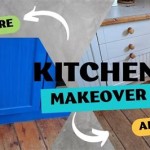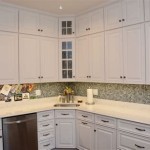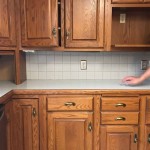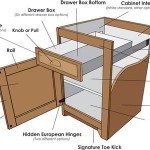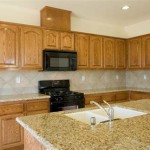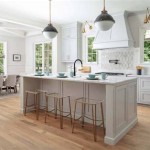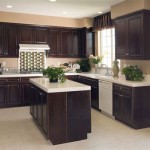How to Reinforce Kitchen Cabinets
Kitchen cabinets endure significant weight and frequent use, often leading to sagging, loose doors, and weakened shelves. Reinforcing cabinets can prevent these issues, extending their lifespan and improving functionality. This article outlines effective methods for reinforcing kitchen cabinets to ensure long-term stability and durability.
Assessing the Need for Reinforcement
Before undertaking any reinforcement project, it is crucial to assess the current state of the cabinets and identify areas requiring attention. This assessment informs the appropriate reinforcement methods and materials. Key indicators of weakened cabinets include:
- Sagging shelves, particularly under heavy items.
- Loose or misaligned doors.
- Visible cracks in the cabinet frame or shelves.
- Difficulty closing or opening drawers smoothly.
- Detached or loose cabinet backing.
Reinforcing Cabinet Shelves
Cabinet shelves bear the brunt of the weight placed within the units. Reinforcing them can effectively prevent sagging and increase load-bearing capacity. Several techniques can be employed:
- Adding Support Brackets: Installing metal L-brackets or shelf support pins underneath shelves provides additional support, especially for longer spans.
- Using Thicker Shelving Material: Replacing existing shelves with thicker plywood or solid wood significantly increases their strength and resistance to bending.
- Installing Shelf Liner: Non-slip shelf liner can add a layer of protection and help distribute weight more evenly.
- Adding a Center Support: For exceptionally long shelves, installing a vertical support in the center can prevent sagging and provide extra stability.
Strengthening Cabinet Frames
A robust frame is essential for the overall integrity of the cabinet structure. Reinforcing the frame can prevent issues like wobbling and misalignment. Here are some effective methods:
- Corner Braces: Installing metal corner braces inside the cabinet frame strengthens the joints and adds rigidity.
- Screwing Cabinets to Studs: Securely attaching the cabinets to wall studs provides significant stability and prevents movement.
- Adding Wood Glue to Joints: Applying wood glue to loose joints before screwing them back together creates a stronger bond.
- Using Backer Boards: Attaching plywood backer boards to the back of the cabinets adds structural support and provides a solid surface for anchoring to the wall.
Securing Cabinet Doors
Loose or misaligned cabinet doors can be both unsightly and inconvenient. Addressing these issues involves tightening hardware and ensuring proper alignment.
- Tightening Hinge Screws: Loose hinge screws are a common cause of door instability. Tightening or replacing them with longer screws can resolve this issue.
- Adjusting Hinge Position: Many hinges offer adjustment screws for fine-tuning the door's position. These can be used to correct alignment and ensure proper closure.
- Replacing Worn Hinges: If hinges are damaged or excessively worn, replacing them with new, high-quality hinges can significantly improve door stability and operation.
Reinforcing Drawer Bottoms
Drawer bottoms, especially in older cabinets, can weaken over time, leading to sagging and difficulty sliding. The following steps can help reinforce them:
- Replacing Drawer Bottoms: Replacing thin or damaged drawer bottoms with thicker plywood or solid wood provides greater strength and durability.
- Adding Support Rails: Installing crosswise support rails underneath the drawer bottom can prevent sagging and increase load capacity.
- Using Drawer Liner: Drawer liner can add a protective layer and help distribute weight more evenly across the bottom.
Choosing Appropriate Materials
The selection of appropriate materials is crucial for the success of any reinforcement project. Consider the following factors when choosing materials:
- Strength and Durability: Opt for materials that are strong enough to withstand the intended weight and usage.
- Moisture Resistance: In kitchen environments, moisture-resistant materials are essential to prevent warping and damage.
- Compatibility: Ensure the chosen materials are compatible with the existing cabinet structure and finishes.
Utilizing Proper Tools and Techniques
Employing the correct tools and techniques is vital for achieving professional and long-lasting results. Key considerations include:
- Accurate Measurements: Precise measurements are crucial for cutting materials to the correct size and ensuring proper fit.
- Appropriate Fasteners: Use screws of appropriate length and gauge to ensure secure attachment and prevent stripping.
- Safety Precautions: Wear appropriate safety gear, such as eye protection and gloves, when working with tools and materials.
- Pre-Drilling Pilot Holes: Pre-drilling pilot holes prevents wood from splitting and ensures a clean, secure screw installation.

Rebuilding Off The Shelf Kitchen Cabinets Johnny D Blog

Home Repair How To Fix Kitchen Cabinets Diy

How To Fix Sagging Cabinets Quickly And Easily Kitchen Infinity

Rebuilding Off The Shelf Kitchen Cabinets Johnny D Blog

Reinforcing Particle Board Cabinets Why Do It Handhills

Kitchen Cabinets How Do I Secure Them The Honest Carpenter

Rebuilding Off The Shelf Kitchen Cabinets Johnny D Blog

20 Genius Ideas For Using Wasted Space On Kitchen Ends Of Cabinet Homedesigninspired

Converting A Kitchen Base Cabinet To An Aquarium Stand Saltwaterfish Com Forums For Fish
File Kitchen Renovation 9a Cabinet Above Microwave Plus Triangles To Reinforce Lower Shelf Jpg Wikimedia Commons
Related Posts

